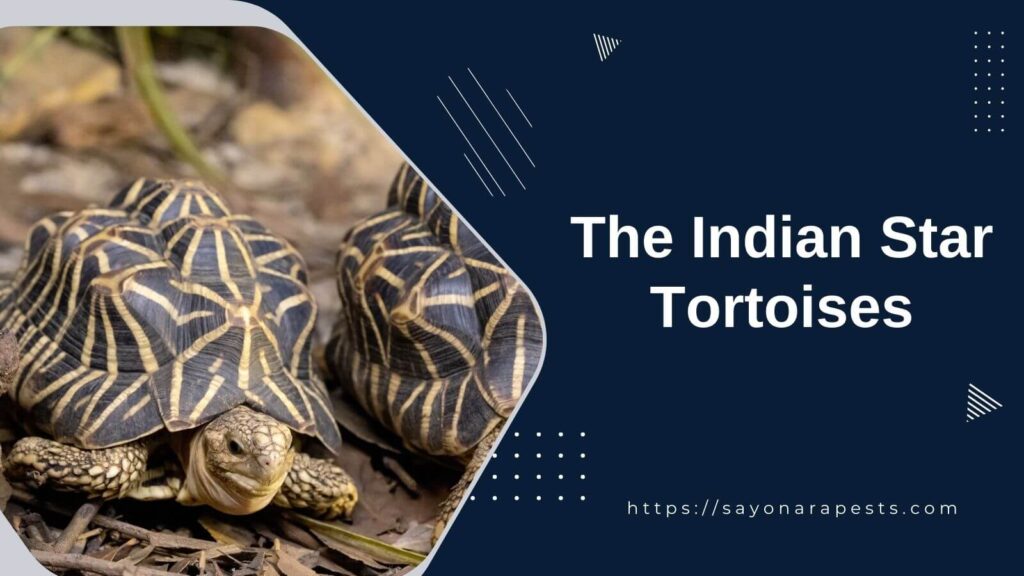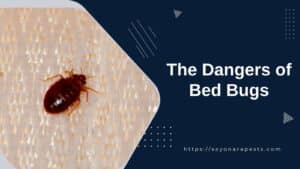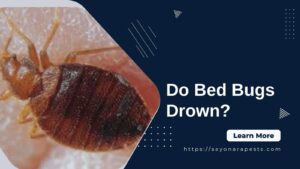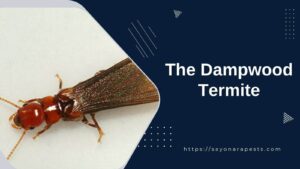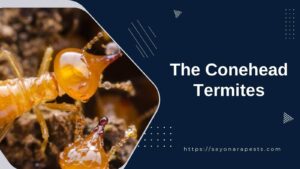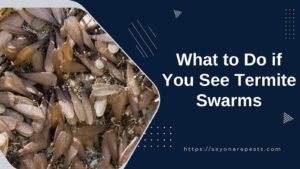Most people think of Indian Star Tortoises as mysterious creatures from nature’s tapestry. Their mesmerizing appearance and fascinating behavior go against what people usually expect.
On their beautiful dome-shaped shells, these gentle reptiles have intricate patterns that look like stars. This makes it easy for them to get people’s attention wherever they go.
Geochelone elegans is the genus of these tortoises, and most of them live in the dry parts of India, Sri Lanka, and Pakistan. Their unique features and interesting way of life have piqued the interest of researchers and nature lovers alike, which has led to a deep look into their lives.
In the ever-changing environment of today, having a deep conversation about Indian Star Tortoises is more important than ever.
With threats like habitat loss, illegal poaching, and the spread of human activities getting worse, these reptiles are living examples of how fragile ecosystems need to stay in balance.
By learning more about their complicated physiology, behavior, and ecological roles, we can learn more about the bigger conservation problems that many species face in their natural habitats.
Realizing how important it is to protect these amazing animals makes us more likely to fight for their safety and take steps to make sure they can keep living in a world that is changing quickly.
The goal of this article is to give a full picture of Indian Star Tortoises, including their interesting features, unique adaptations, and complex relationships with their surroundings.
We want to give you a glimpse into the lives of these interesting reptiles by looking at how they have changed over time, where they live in the wild, what they eat, and how they reproduce.
Also, we will talk about the conservation efforts that are being made to protect the future of the Indian Star Tortoises. We will also talk about how important it is for everyone to work together to protect the rich biodiversity of our planet.
Get ready for a fascinating trip through the mysterious world of the Indian Star Tortoises, where the worlds of beauty, strength, and conservation all meet.
Description of Indian Star Tortoises
Physical characteristics
The Indian Star Tortoise (Geochelone elegans) is a type of tortoise that is known for its unique appearance and shell pattern. The average length of these tortoises is between 12 and 14 inches (30 to 35 cm), and they weigh between 7 and 13 pounds (3 to 6 kg).
The Indian Star Tortoise’s shell has yellow or tan patterns that look like stars. This is one of the things that makes it stand out. The common name of this species comes from the fact that these patterns look like star formations.
The Indian Star Tortoise’s carapace, or top shell, is made up of large, flat scales called scutes. These scutes have intricate geometric patterns that look like dark lines or spots on a lighter background.
The bright colors and intricate patterns not only make them look interesting but also help them hide in their natural environment.
The legs of an Indian Star Tortoise are strong, and its tail is short and thick. The legs are made for walking on land, so they can move easily over different surfaces.
The front limbs have strong claws that help the animal dig burrows for shelter and food. Their back legs are a little bit longer and made for strong strides.
Natural range and distribution
The Indian Star Tortoise lives in parts of India, Sri Lanka, and Pakistan. They are mostly found in Rajasthan, Gujarat, and Maharashtra, which are dry and semi-dry parts of India.
These tortoises live in grasslands, scrublands, dry forests, and thorny shrublands, among other places.
Their range is affected by how much suitable vegetation is around and how easy it is for them to get to the water. Indian Star Tortoises are very good at living in places that are hot and dry.
They tend to live in places where it’s hot and it doesn’t rain much. The tortoises like to live in open areas with lots of sunlight so they can bask and keep their body temperature at a good level.
Indian Star Tortoises are native to certain parts of the world, but they have also been brought to other parts of the world through the trade in exotic pets. These tortoises are very popular because of how unique they look and how small they are.
This has led to illegal smuggling and the creation of non-native populations in different countries.
Indian Star Tortoises are interesting reptiles that are known for their unique shell patterns and strong bodies. They live in dry and semi-dry places in India, Sri Lanka, and Pakistan, which is where they are found in the wild.
Researchers and fans are both very interested in the Indian Star Tortoise because of how it looks and how well it can adapt.
Habitat of Indian Star Tortoises
Natural habitat
Indian Star Tortoises live in dry forests, grasslands, and scrublands in India, Sri Lanka, and some parts of Pakistan. They live in places that have a tropical climate, with high temperatures and little rain.
These tortoises have learned to live in a variety of places, such as dry and semi-dry areas. They can be found in sandy plains, rocky hillsides, and thorny scrublands, among other places.
In their natural environment, Indian Star Tortoises can eat a wide variety of plants. They usually live in places where there are lots of grasses, shrubs, and succulent plants, which give them food and shade.
Water sources, like ponds, puddles, and seasonal streams, are very important for their survival. These tortoises are used to the dry climate and can save water by hiding in burrows or cracks when it’s hot.
Man-made habitats
Because of what people do, Indian Star Tortoises have become more used to living in habitats made by people.
Some of these are farms, plantations, and cities with gardens and parks. Even though these places may not be exactly like the tortoises’ natural habitats, they can still help the tortoises live and have babies.
Plants are very important in habitats that people have made. Indian Star Tortoises eat grasses, broad-leaved plants, and herbs that can be eaten.
These tortoises can find food in gardens and parks with many different kinds of plants. It is important to make sure that pesticides and other chemicals that could hurt their health are not used in these habitats.
Ideal living conditions for Indian Star Tortoises
There are several things to think about when making an ideal living environment for Indian Star Tortoises.
First of all, the enclosure or habitat should have enough space for the tortoises to move around. Tortoises require adequate space to exercise, explore, and exhibit natural behaviors.
The tortoises’ health depends a lot on the temperature and humidity of their habitat. The temperature gradient should be like where they live in the wild, with a warm area for basking and a cooler area in the shade.
The tortoises can soak and stay hydrated by themselves if the enclosure has a shallow water dish or a small pool.
Indian Star Tortoises need a varied diet to stay healthy and get enough food. Their diet should include a variety of grasses, leafy greens, vegetables, and even some fruits every once in a while.
Calcium and vitamin supplements might be needed to make sure that bones grow and stay healthy.
The habitat should also have places for animals to hide, like rocks, logs, or man-made shelters. These give the tortoises a safe place to stay and keep them safe from bad weather or other dangers.
It is important to check on the habitat often to make sure that the conditions stay good. This includes making sure the temperature and humidity are right, giving them fresh food and water, and cleaning the enclosure often so that waste and bacteria don’t build up.
It is important for the health of Indian Star Tortoises to know where they live in nature and to try to make conditions as similar as possible in man-made habitats.
We can give these fascinating animals a good place to live in captivity by thinking about things like plants, temperature, humidity, food, and shelter.
Diet of Indian Star Tortoises
Herbivorous feeding habits
Indian Star Tortoises, which are called Geochelone elegans in science, are mostly herbivores, which means that most of what they eat is plants. These cute reptiles have a special way to eat that lets them graze on different kinds of plants.
Their mouths look like beaks, and the sharp edge helps them cut through tough plant matter. The Indian Star Tortoise is a diurnal animal, which means that it is active during the day and sleeps at night.
Their eating habits are an important part of their overall health and need to be watched carefully.
List of favorite foods
When it comes to what they eat, Indian Star Tortoises have certain tastes. Even though each tortoise may have slightly different tastes, most of them like the same kinds of plants and vegetables.
Leafy greens like lettuce, kale, collard greens, and dandelion greens are some of their favorite foods. They also like to eat herbs like basil, parsley, and cilantro.
Indian Star Tortoises also like the young shoots and flowers of plants like hibiscus, clover, and rose petals. It is important to remember that these tortoises need to eat a variety of foods to get all the nutrients they need.
Nutritional requirements
It is important for the health and long life of Indian Star Tortoises to meet their nutritional needs. Since they don’t eat meat, they need a diet that is high in fiber, low in protein, and has a moderate amount of calcium.
Fiber helps your body break down food and keeps your gut healthy. Indian Star Tortoises can get a lot of fiber from foods like leafy greens and vegetables. But too much protein can cause health problems, like deformed shells, so it shouldn’t be eaten in large amounts.
Calcium is important for the growth and health of their shells and bones in general. Indian Star Tortoises should have access to calcium-rich foods like calcium supplements, cuttlebone, and edible calcium sources like crushed eggshells to make sure they get enough calcium.
It is best to give Indian Star Tortoises a wide range of foods so that they can get a balanced and healthy diet. This keeps things from getting boring and gives you a wide range of important nutrients.
It’s best to give them a mix of leafy greens, vegetables, and even some fruits once in a while. But fruits should be given less often because they have more sugar.
It is very important not to feed tortoises poisonous plants, like those in the nightshade family (like tomatoes, peppers, and eggplants), because they can hurt them. Also, wild plants that are picked should be carefully identified to make sure they are safe to eat.
In this regard, Indian Star Tortoises are herbivorous reptiles that have specific ways of eating and dietary needs. To get the fiber, vitamins, and minerals they need, they should eat a variety of leafy greens, vegetables, and the occasional fruit.
To make sure they stay healthy, they must stay away from foods with too much protein and plants that are poisonous. Indian Star Tortoises can stay healthy and happy for many years if their owners plan their diets carefully and give them a variety of foods.
Reproduction of Indian Star Tortoises
Mating habits
Indian Star Tortoises (Geochelone elegans) have interesting and unusual ways of mating. Most of the time, these tortoises do things to attract potential mates. During mating season, which changes from place to place, male tortoises actively chase after females.
Males show their interest in females by doing things like bobbing their heads, circling them, and nudging them. They also make low-pitched sounds that help them find mates.
Once the male’s advances are accepted by the female, copulation happens. The way that Indian Star Tortoises have babies is called “multiple paternity.”
This means that a single set of eggs could have babies from more than one male. This way of mating makes a population’s genes more diverse and improves the overall health of the species.
Nesting habits
As part of their process of making babies, Indian Star Tortoises have interesting ways of making nests. Female tortoises undertake a significant journey to find suitable nesting sites.
Most of the time, these places are found in sandy or soft soil, preferably near plants that can protect and hide the eggs. The female tortoise uses her back legs to dig a deep hole. This makes a nest chamber where she can lay her eggs.
When building a nest, the female carefully digs with her back legs and stops to catch her breath every so often. Once the nest is ready, the female tortoise will lay a group of eggs.
The number of eggs in a nest can range from about 5 to 15 eggs, depending on the bird and its surroundings. After putting the eggs in the nest, the female carefully covers the nest with soil to hide it from possible predators.
Incubation period
After the female carefully builds the nest, the Indian Star Tortoise eggs go through a period of incubation.
This time lasts between 70 and 100 days, depending on things like temperature and humidity. The nest is buried so that the eggs can grow and hatch in safety.
The temperature is the most important factor in figuring out the gender of the hatchlings. Temperatures between 28 and 30 degrees Celsius are best for making male hatchlings, while temperatures between 32 and 34 degrees Celsius are better for making females.
This is a fascinating part of how Indian Star Tortoises reproduce. It is called temperature-dependent sex determination.
During the time when the eggs are incubating, they are vulnerable to predators and the environment.
Birds, rodents, and reptiles, which are all-natural predators, may go after the nests that are buried. But the mother’s careful nesting and camouflage make it less likely that she will be found.
When the time for incubation is over, the babies come out of their eggs. These small tortoises have a small egg tooth on the end of their snouts, which they use to break the eggshell.
When the baby tortoises hatch, they make their way to the surface and use their instincts to find shelter and food.
Indian Star Tortoises have interesting mating and nesting habits that help them have babies. The multiple paternity mating systems and courtship rituals help keep the species’ genes diverse and strong.
The eggs are safe and protected while they are incubating because the females carefully dig holes and build nests. The fact that the Indian Star Tortoise’s sex depends on temperature makes their reproduction even more complicated.
By watching and learning about these parts of their reproduction, you can learn a lot about their biology and how to protect this beautiful species.
Comparison with other Tortoise Species
When you compare Indian Star Tortoises to other types of tortoises, you can see that they are both different and the same in some important ways.
One big difference between them is where they live. Indian Star Tortoises mostly live in dry parts of India and Sri Lanka, but other tortoise species can be found on many different continents and in many different kinds of environments.
For example, the Galapagos Giant Tortoise is native to the Galapagos Islands in the Pacific Ocean. It is known for its huge size.
On the other hand, the African spurred tortoise lives in the Sahara Desert and the areas around it. It is known for being hardy and able to adapt to dry environments.
When it comes to size, shape, and color, tortoise species are very different from one another. Indian Star Tortoises are easy to tell apart from other species because their shells have patterns that look like stars.
The Aldabra Giant Tortoise, on the other hand, has a bigger body and is one of the largest species of tortoise on Earth. The Leopard Tortoise lives in the grasslands of Africa. Its shell is spotted with yellow and black, which helps it blend in with its surroundings.
Indian Star Tortoises, or Geochelone elegans, are different from other tortoise species in a number of ways. Their small to medium size is one of the things that makes them stand out.
The average length of an Indian Star Tortoise is between 25 and 30 centimeters, which makes them smaller than similar species like the Galapagos Giant Tortoise.
Their top shell, or carapace, is another thing that stands out. Indian Star Tortoises have a beautiful pattern that looks like stars. Yellow or cream-colored lines spread out from the center in a complicated way.
Their name comes from their unique shape, which also makes them very popular in the exotic pet trade. Their plastron, or bottom shell, is usually flat and yellow, protecting their soft underbelly.
Another interesting thing about Indian Star Tortoises is that they can pull their head and legs into their shell to protect themselves.
This defense, along with their hard, dome-shaped shell, helps them stay safe from predators in their natural environment.
Even though Indian Star Tortoises have unique traits, it is important to tell them apart from other tortoise species. One of the most important ways to tell them apart is where they live.
As was already said, most Indian Star Tortoises live in dry parts of India and Sri Lanka. The Red-footed Tortoise, which lives in the forests of South America, is different from the Indian Star Tortoise because the scales on its legs are bright red or orange.
Also, different species of tortoise eat in very different ways. Indian Star Tortoises are mostly herbivores, which means they eat mostly plant matter like grasses, leaves, and flowers.
This is different from the Sulcata Tortoise, which is known for its strong jaw structure that lets it eat tougher plants and even cacti.
Also, different tortoise species have different ways of reproducing and mating. Like many other tortoises, Indian Star Tortoises have courtship rituals.
During the breeding season, males often bump into each other as they fight over territory. On the other hand, the male Hermann’s Tortoise, which lives in Europe, circles the female and bites her head and legs during mating.
In a broader sense, Indian Star Tortoises are different from other tortoise species in ways that are unique to them.
From their small to medium size and the star-like patterns on their shells to where they like to live and what they eat, these tortoises have adapted to their environment in a number of ways.
Understanding the similarities and differences between Indian Star Tortoises and other tortoise species helps us see how different tortoises can be and gives us a better understanding of these interesting animals.
Threats and Conservation
Threats to Indian Star Tortoise Populations
There are many threats to the Indian Star Tortoise, which has led to a drop in their numbers. Loss of habitat and fragmentation makes it hard for Indian Star Tortoises to stay alive.
Rapid urbanization, farming expansion, and industrial growth have destroyed and damaged their natural habitats, leaving them with few places to live and grow.
Also, the illegal trade in wildlife is a big problem for Indian Star Tortoises. They are popular exotic pets because of how unique they look.
Because of this, poaching has led to a big drop in their numbers. Indian Star Tortoises are popular as pets both in the United States and abroad.
This has created a lucrative market that encourages the illegal collection and trade of these reptiles. The uncontrolled trade has an effect on their populations and adds to the stress of the people who are captured and moved.
Conservation Efforts
Conservation efforts have been started to protect the Indian Star Tortoise’s populations and habitats because it is so important to do so.
Several groups, both government and non-government, are working on conservation programs to help protect these tortoises from the dangers they face.
Indian Star Tortoises need to protect their habitats if they are to live for a long time. Protected areas and national parks have been set up to keep their natural environments safe and help them breed and find food.
These protected areas also help tortoises get from one piece of their habitat to another, which increases their chances of survival.
In addition to trying to protect their habitats, people are also trying to stop the illegal trade in wildlife that hurts Indian Star Tortoises.
To do this, law enforcement needs to be made stronger and stricter rules need to be put in place to control the collection, transport, and trade of these reptiles.
People are taught about the importance of tortoises to the environment and the risks of taking part in the illegal wildlife trade through campaigns and educational programs.
The Role of Humans in Indian Star Tortoise Conservation
People are very important to keeping Indian Star Tortoises alive. Human actions have a direct effect on the survival of these reptiles because they are the main cause of habitat loss and the illegal trade in wildlife.
Humans, on the other hand, can be powerful agents of change and help protect them in good ways.
People who live close to the places where Indian Star Tortoises live often help with conservation efforts. Getting these communities involved in sustainable livelihood programs, like ecotourism or other ways to make money, can help reduce the amount of stress on tortoise habitats.
By giving economic incentives and spreading the word about how important conservation is, these programs encourage a sense of stewardship and get local communities involved in protecting tortoises and their homes.
Indian Star Tortoise conservation can only be successful if the government, conservation groups, researchers, and local communities all work together.
For these unique reptiles to live for a long time, we need integrated conservation strategies that combine scientific research, habitat restoration, community involvement, and law enforcement.
Also, people can help save the Indian Star Tortoise by taking care of their pets properly. If you don’t buy these tortoises or support the illegal trade of them, the demand for them as pets goes down.
This makes poaching and trafficking less likely to happen. Also, getting the word out about how important conservation is and pushing for stricter rules can make a big difference.
In the end, the Indian Star Tortoise’s survival is in danger, mostly because of habitat loss and the illegal trade in wildlife.
But if everyone works together to protect their habitats, enforce the law, involve the community, and keep pets in a responsible way, these threats can be lessened and the long-term survival of these amazing reptiles can be ensured.
People need to understand their role in both the problems the Indian Star Tortoise faces and the good things that could happen because their actions can make a big difference in saving this species.
Overall, the Indian Star Tortoise is a fascinating species that deserves our attention and efforts to protect it. This tortoise has a special place in the world of reptiles because it looks different and lives in many different places.
By learning about their favorite places to live, what they eat, and how they have babies, we can help make the best conditions for these amazing animals.
Comparing the Indian Star Tortoise to other tortoise species shows how it is different from other tortoises and shows how important it is.
Even though the Indian Star Tortoise population is threatened by things like habitat loss and the illegal trade of wildlife, there are conservation efforts going on to protect and save this species.
People and groups work hard to make sure the Indian Star Tortoise will be around for a long time by doing things like restoring its habitat, teaching people about it, and starting breeding programs.
But the success of these conservation efforts depends a lot on how much people help. It is very important that we all take responsibility and do what we can to stop the things that are hurting these tortoises.
In conclusion, the Indian Star Tortoise is fascinating not only because of how it looks but also because of how important it is for the environment.
We can help protect it by appreciating its beauty and understanding what it needs from the environment.
Let’s work together to protect this beautiful species for future generations, making sure that humans and the Indian Star Tortoise can live together in peace on the same planet.

